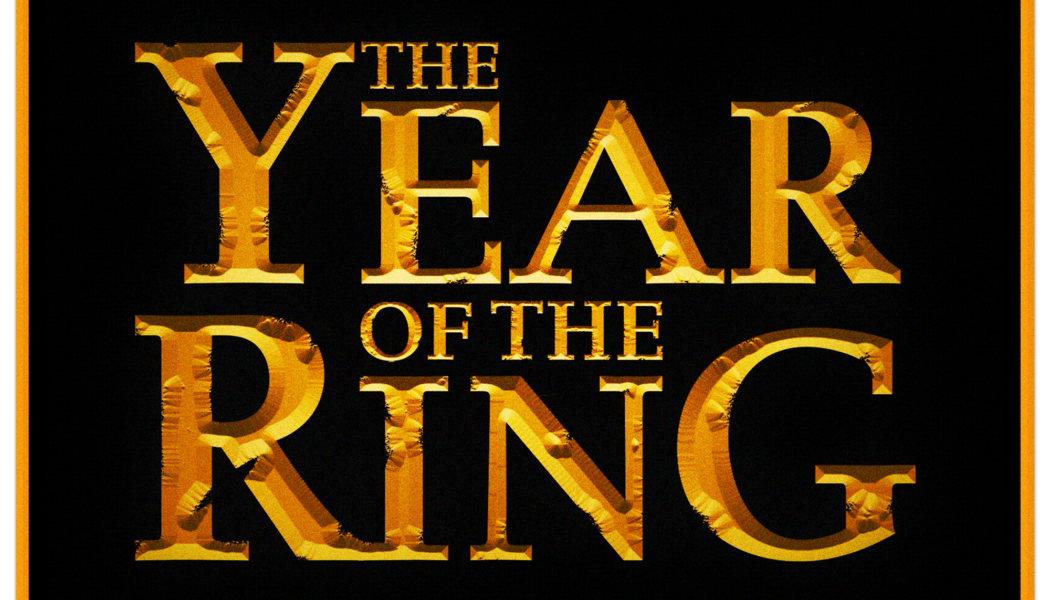Motion capture is the biggest technological advance in the field of screen acting since The Jazz Singer ushered in the era of synchronized sound in 1927, but it’s unclear where the field would be without the performance of Andy Serkis as Gollum in Peter Jackson’s The Lord of the Rings: The Two Towers and its follow-up, The Return of the King. Jackson was not the first to use motion capture in a feature film, but he was the first to use it well, and Serkis’ work as Gollum is so persuasive that it would help birth a new kind of acting and filmmaking. Still, two decades in, it’s a bit difficult to describe, or understand, what it even means to talk about this new not-quite-live but not-quite-animated form of performance.

2021 marks The Lord of the Rings movies’ 20th anniversary, and we couldn’t imagine exploring the trilogy in just one story. So each Wednesday throughout the year, we’ll go there and back again, examining how and why the films have endured as modern classics. This is Polygon’s Year of the Ring.
Serkis first tried to explain his job in the making-of documentary that came bundled with The Two Towers’ DVD release. Initially, all we see of Serkis in the documentary is a manic blur wrestling Elijah Wood’s Frodo and Sean Astin’s Sam. We spy on Jackson as he shoots Gollum’s entrance into the film. Gollum has been tracking Frodo and Sam and is now attacking them in hopes of finally getting his distended hands on his precious, precious ring. Serkis jumps all over the stage, pulled and pushed by Wood and Astin. He’s dressed in all white, complete with a hood. He looks like a discount Moon Knight, or perhaps an angry larva.
“I’m playing the character of Gollum,” Serkis says in the doc. “Now, the character of Gollum does tend to belong to a lot of different departments, obviously, as a computer-generated character. But I guess what I’m doing is really providing the acting side of it, the emotional drive behind the character, the physicality, and I suppose, most importantly, the voice.”
On one level, Serkis is only describing what all actors do: using their physicality and voice to embody, and communicate the psychology and emotional drives of, a character. But most actors do all of those things simultaneously by themselves. Serkis would need to do all of those things separately, and he wouldn’t do them alone.
:no_upscale()/cdn.vox-cdn.com/uploads/chorus_asset/file/23055571/gollum_angry_lord_of_the_rings.jpg)
In a way, while on set, Serkis sketched out an outline that he, Jackson, and the animators at Weta could embellish later. Since motion-capture technology was still in its early phases, nothing Serkis did during principal photography for The Two Towers would wind up in the final product. In order to make Gollum, Serkis and the animators at Weta Digital broke down “the acting side of it” into its component parts, then stitched them back together like Frankenstein’s monster. That the end result is so believable, so deeply felt and human, is miraculous given the complicated, piecemeal nature of its construction.
Jackson shot each Gollum sequence twice: once with Serkis doing the movements of the character, and once without him. Later — many months later — Serkis recreated his blocking in a motion-capture studio. Surrounded by 25 cameras in an entirely blue studio so pristinely maintained that crew members were barred from bringing water bottles into the room for fear that their reflections would muck up the shot, Serkis wore a special costume that enabled his movements to manipulate a digital Gollum puppet, and a special visor that showed him what his movements would look like in the already-shot footage. He then recreated his physical movements and performance, so that they could serve as the basis for the eventual animated creature.
By today’s standards, the “puppet” was rudimentary. Far less of Gollum is an exact rendering of Serkis’ movements than most people today remember. As Bay Raitt, one of the 18 animators who created Gollum, explained to Animation World Network, “There is no facial motion-capture data, at all, on Gollum. The only motion-capture data is for his torso, legs and arms.”
The hands, feet, and, most importantly, facial expressions of Gollum were all animated later, using Serkis’ performance as reference footage. Gollum’s face is made up of 875 shapes that animators manipulated using 64 controls in order to create his many expressions. At times, the animators revised Serkis’ performance, altering the physicality or even the facial expressions, to better suit Jackson’s needs. Serkis additionally dropped by Weta’s offices to help the animators, modeling gestures or facial expressions they were struggling to realize.
:no_upscale()/cdn.vox-cdn.com/uploads/chorus_asset/file/23055487/YOTR_alamy_P0XBWG.jpg)
We’ve all seen these movies so many times over the last 20 years that it can be hard to really grasp the achievement of the end results. Previous attempts at using motion capture gave the world Jar Jar Binks and Sinbad: Beyond the Veil of Mists, performances so off-putting and soulless that one could not help but long for the heyday of Jim Henson’s Creature Shop. Gollum is the opposite — vividly alive, and essential to the success of Jackson’s Lord of the Rings adaptation. He is the story’s lone multidimensional character, and the battle for his soul, a soul that has long since been lost to the Ring of Power, buttresses the stakes of Frodo’s own struggle. We see, through looking at the pathetic, emaciated body of the former Smeagol, what could become of Frodo if he’s not careful.
The action of Lord of the Rings also hinges on Gollum. As Gandalf says in the first film, The Fellowship of the Ring, Bilbo’s choice to pity Smeagol and save his life “may rule the fate of man.” This, in turn, sets up Frodo’s declaration in The Two Towers that “maybe he does deserve to die, but now that I see him, I do pity him.” Frodo and Sam’s journey to throw the ring into the fires of Mount Doom is guided by Gollum, and it is Gollum who ultimately destroys the Ring and dies in the process. Frodo survives his journey with the Ring because of the mercy he shows Gollum, even as that mercy nearly costs him his life on more than one occasion.
This whole arc only works if the audience understands and sympathizes with multiple characters’ refusal to kill Gollum when they have the chance. Gollum is untrustworthy, vicious, cruel, violent, manipulative, and weak. In a George R.R. Martin novel, he’d have a life expectancy of a dependent clause. In Lord of the Rings, his survival evokes our struggle to cling to our better natures in the darkest and most urgent of times, a struggle we were in the process of failing as a nation embarking on the War on Terror.
Serkis and the team at Weta Digital made Gollum pathetic by emphasizing his divided nature. He looks grotesque, and moves like a feral beast, but his facial expressions are deeply human. He is simultaneously repugnant and adorable. He’s both conniving and childlike, a pining lover and a vicious killer, a victim of his own worst impulses. He often hunches in a full-body cringe, so disgusted with himself and afraid that he can barely look at who he’s talking to. Serkis’ voice work, particularly, is a marvel. His vocal choices for Gollum are extreme, but within them he finds a huge range, filled with little microtonalities and grace notes. It is by far the most sophisticated and successful performance in the film, even if that performance is constructed by 20 different people.
:no_upscale()/cdn.vox-cdn.com/uploads/chorus_asset/file/23055499/gollum_two_towers.jpg)
When he was cast as Gollum, Serkis was virtually unknown to most audiences. He had been a journeyman stage actor in England, touring the country in productions of Brecht and playing a drag version of the Fool opposite Tom Wilkinson’s King Lear. He had only appeared in a few films, most notably Mike Leigh’s Topsy-Turvy. His stage training and experience are vividly recognizable in his physical and vocal expressiveness, as well as his willingness to stretch his performance beyond the stylistic limits of naturalism.
The clarity and size of his choices make him ideally suited to the expressive needs of animation in a way that other actors are not. Robert Zemeckis’ 2004 film The Polar Express contained a motion-captured version of Tom Hanks that was so off-putting it helped popularize the concept of the uncanny valley. Meanwhile, Serkis went on to become nearly synonymous with motion capture acting, taking roles as apes and bears and whatever a “Force-sensitive genetic strandcast humanoid male” is. One of his greatest performances came in Ninja Theory’s flop Enslaved: Odyssey to the West, one of the first video games in which characters communicate with sophisticated, visible subtext. In 2011, Serkis founded The Imaginarium, a production company that specializes in projects that use motion capture. Today, if you Google “Andy Serkis” and “motion capture,” one of the questions that comes up is about whether the actor invented the technology in the first place.
Motion capture evolved right alongside its greatest muse, becoming sophisticated enough that it is now often referred to as “performance capture.” By the time Serkis starred as Caesar in 2011’s Rise of the Planet of the Apes, animators were able to capture facial expressions of actors, and the film pioneered a new system for on-set motion capture so actors didn’t have to fully re-create their performances in post. A new real-time playback system enabled Serkis and his castmates to see how their ape characters moved while filming. The performances — and the animation of them — grew so sophisticated that by 2014’s Dawn of the Planet of the Apes, A.O. Scott of the New York Times declared Serkis’ Caesar “one of the marvels of modern screen acting.” Each of the three films in the series brought widespread speculation about whether Serkis would be nominated for an Oscar, and a wave of impassioned writing on why he should. But the nominations were never to be.
Even before the advent of more immersive motion capture technology, New Line Cinema mounted an Oscar campaign for Serkis during Lord of the Rings. Although the Academy ruled that motion capture acting was eligible, no nomination was forthcoming. Parsing the authorship questions raised by performance capture proved too difficult, and Serkis’ somewhat self-interested attempts to clarify the matter only got him into trouble. In a 2014 interview with io9, referencing the various advances in animation technology since Lord of the Rings, Serkis said, “The way that Weta digital […] have now schooled their animators to honor the performances that are given by the actors on set […] that’s something that’s really changed. It’s a given that they absolutely copy [the performance] to the letter, to the point in effect what they are doing is painting digital makeup onto actors’ performances.”
Animators were understandably furious at having their contributions dismissed. Serkis is undeniably an author of Gollum, Caesar, Monkey, Snoke, and his other motion capture roles, but he is hardly the only one. As Randall William Cook, the animation supervisor for the Lord of the Rings films, put it to Cartoon Brew, “Gollum was a synthesis, a collaborative performance delivered by both Andy and a team of highly-skilled animation artists.” The staging, facial expressions, and interpretation of the role were often altered by animators in postproduction without Serkis’ involvement. Gollum’s most memorable scene — the one in which he debates with himself about betraying the hobbits at the end of The Two Towers — was significantly altered by animators from Serkis’ original movements, according to Cook.
But screen acting is always a synthesis of sorts, with many components of what we think of as cinematic acting lying beyond an individual actor’s control. Actors don’t choose which takes their directors use in a film, or what happens with those takes in the editing room. Dialogue can be cut or added after the fact, drastically changing how an audience views a character. The pitch, timbre, and resonance of an actor’s voice can be altered with software. The musical score, the lighting, the other actors’ performances — the list of things outside an actor’s control that impact how we evaluate their work goes on and on. If motion capture makes us question what it means to be a screen actor, it is only summoning up long-buried questions we frequently like to ignore.
Filmmaking is a collaborative art, with every creative job impacting every other in ways both perceptible and not. Perhaps, then, the problem is our desire to assert authorship for what should be a collective achievement. Gollum is one of the great screen characters of the aughts and a groundbreaking technical achievement at the same time. He is, if anything, as interesting, complicated, and compelling than the films taken as a whole. Perhaps, even for those of us who are scholars of acting, that should be enough.
Join Our Telegram Group : Salvation & Prosperity

/cdn.vox-cdn.com/uploads/chorus_asset/file/23055790/81lqX2FuRhL.jpg)








